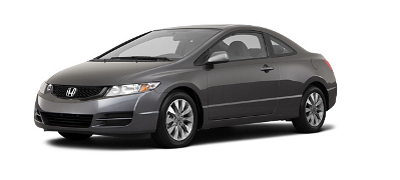Civic Exhaust Videos
- 1992 Honda Civic Exhaust Systems
- 1993 Honda Civic Exhaust Systems
- 1994 Honda Civic Exhaust Systems
- 1995 Honda Civic Exhaust Systems
- 1996 Honda Civic Exhaust Systems
- 1997 Honda Civic Exhaust Systems
- 1998 Honda Civic Exhaust Systems
- 1999 Honda Civic Exhaust Systems
- 2000 Honda Civic Exhaust Systems
- 2001 Honda Civic Exhaust Systems
- 2002 Honda Civic Exhaust Systems
- 2003 Honda Civic Exhaust Systems
- 2004 Honda Civic Exhaust Systems
- 2005 Honda Civic Exhaust Systems
- 2006 Honda Civic Exhaust Systems
- 2007 Honda Civic Exhaust Systems
- 2008 Honda Civic Exhaust Systems
- 2009 Honda Civic Exhaust Systems
- 2010 Honda Civic Exhaust Systems
- 2011 Honda Civic Exhaust Systems
Civic Exhaust System Tips

American Honda began selling power equipment and motorcycles in the United States in 1959, but didn’t introduce its first passenger vehicle until 1973. That initial model, a subcompact Civic, offered more features, better fuel economy and was sold at a lower price than competing models, quickly becoming a strong seller just as the first gas crisis of the 1970s hit home. The Civic of today is larger and heavier, but it remains an excellent value and is one of the best selling cars in America.
Civic Lessons
Today’s Honda Civic is a compact coupe or sedan and is available in gasoline, hybrid or compressed natural gas applications. The Civic is now just one of many Honda models sold and is arguably the most popular tuner car, giving rise to a subculture in the late 1980s that remains active today.
Main competitors for the Honda Civic include the Toyota Corolla, Chevrolet Cruze, Ford Focus and the Hyundai Elantra. The Civic hybrid is one of only a few compact hybrid sedans sold in America today and the Civic CNG is the only compressed natural gas vehicle available to consumers. This overview, however, focuses on gas-powered Civics only. The current Civic is in its eight iteration with the ninth generation model planned for the 2012 model year.
Civic Generations
The engines offered in the Honda Civic have gradually grown in capacity as the model has added weight and increased its overall dimensions. The fifth generation Civic of the early 1990s is powered by a miserly 1.5-liter engine producing just 92 horsepower, with a 1.6-liter, 125 horsepower VTEC found in sporty models.
The sixth generation Civic offers standard and sport versions of its 1.6-liter four, producing 106 and 127 horsepower respectively. By the early 2000s, the seventh generation Civic rolled out and this model features a 127 horsepower 1.7-liter engine. The corresponding Civic Si is powered by the high-revving 2.0-liter four, producing 160 horsepower and mated to a 5-speed manual transmission.
Today’s Civic
Two gasoline engine choices are available for the 2011 Honda Civic. A 1.8-liter, inline-four is paired with a 5-speed manual or optional 5-speed automatic transmission. This engine is rated at 140 horsepower at 6,300 rpm and 128 foot-pounds of torque at 4,300 rpm. The base engine serves as the model’s fuel economy leader, providing ample pep and competitive fuel economy.
The favorite engine of today’s tuner set is Honda’s 2.0-liter DOHC i-VTEC four cylinder, rated at 197 horsepower at 7,800 rpm and 139 foot-pounds of torque at 6,100 rpm. Paired with a close-ration 6-speed manual transmission, this performance engine includes a cold air intake and high-flow exhaust manifold. Even without the added benefits of other tuner parts including a performance exhaust system, the Honda Civic Si goes from zero to 60 mph in about 6.7 seconds. Luckily, the aftermarket parts industry has designed numerous Civic-friendly parts to add more zest to your ride, customized performance enhancers crafted to meet your need for speed.
There are many companies producing exhaust system options for the Honda Civic:








